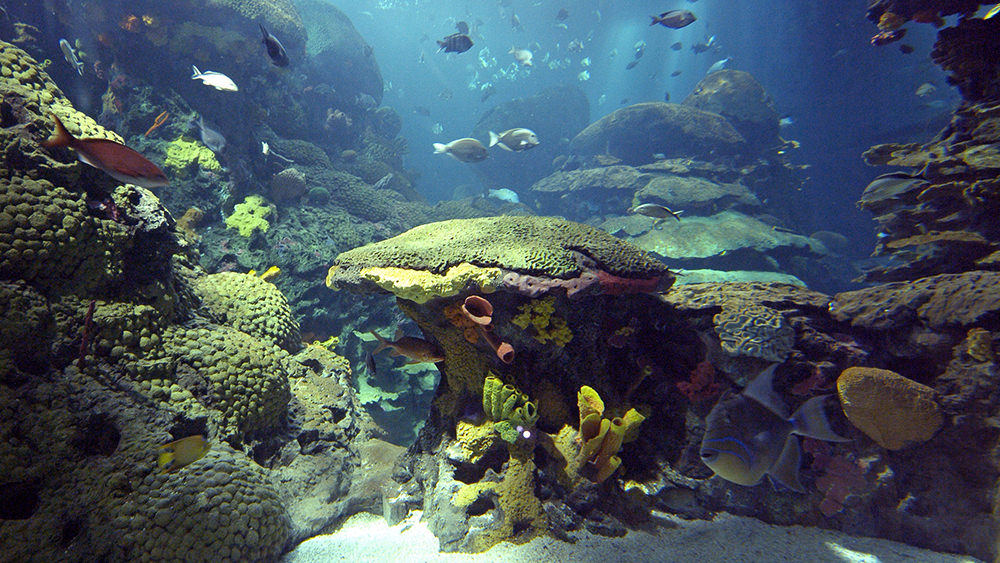
Due to the remote location of Flower Garden Banks National Marine Sanctuary, 80-125 miles offshore, most people will never get a chance to see it in person. So, how can we get people interested enough to care about preserving it? We bring the sanctuary to them through zoo and aquarium exhibits.
Following is an alphabetical listing of some of our zoo and aquarium partners. We encourage you to visit the sanctuary by visiting them!
Aquarium Pyramid at Moody Gardens
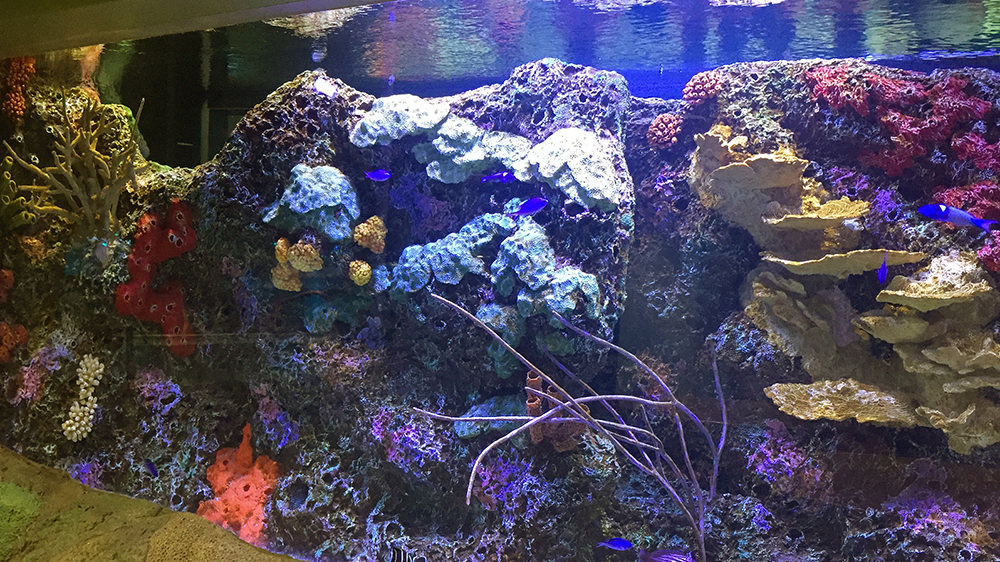
The Aquarium Pyramid at Moody Gardens, located in Galveston, TX, is the closest aquarium to the sanctuary offices. In May 2017, the aquarium welcomed a small Flower Garden Banks National Marine Sanctuary exhibit as part of a larger, two-year renovation. The new exhibit can be viewed from the public area leading to the large Caribbean exhibit, and also from a behind-the-scenes meeting/event area.
Another part of the aquarium renovation features a large oil/gas platform exhibit and several sea creature models, for which the sanctuary provided images and inspiration.
In 2019, Moody Gardens also added a Coral Rescue Lab to harbor healthy corals from Florida Keys National Marine Sanctuary to safeguard healthy Florida corals from the horrible Stony Coral Tissue Loss Disease (SCTLD) that is devastating Florida's reefs. By 2022, the Florida corals had outgrown the space and were transferred to another facility.
That opened the door for FGBNMS to start banking healthy corals at the Coral Rescue Lab as an insurance policy against future challenges to our reefs, and for continuing research into what makes some corals more resistant to coral bleaching and disease. Aquarium visitors can see these corals through the large glass windows looking into the lab and learn more about our collaboration from the video monitors alongside.
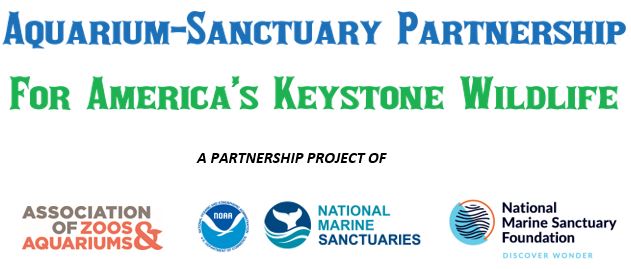
Moody Gardens is one of two aquariums participating in the Aquarium-Sanctuary Partnership for America’s Keystone Wildlife with Flower Garden Banks National Marine Sanctuary. This partnership project is supported by the NOAA Office of National Marine Sanctuaries, the National Marine Sanctuary Foundation, and the Association of Zoos and Aquariums.
Cameron Park Zoo
Cameron Park Zoo, located in Waco, TX, is the only zoo that currently houses a Flower Garden Banks National Marine Sanctuary exhibit.
This 50,000-gallon exhibit is part of the Brazos River Country Exhibit, which opened in July 2005. It features a journey up the Brazos River from the Gulf. Visitors to the exhibit get a chance to see the reef and part of the watershed that impacts it.
An interactive sanctuary kiosk was installed in the exhibit area in 2010 to enhance the visitor experience.
Tennessee Aquarium
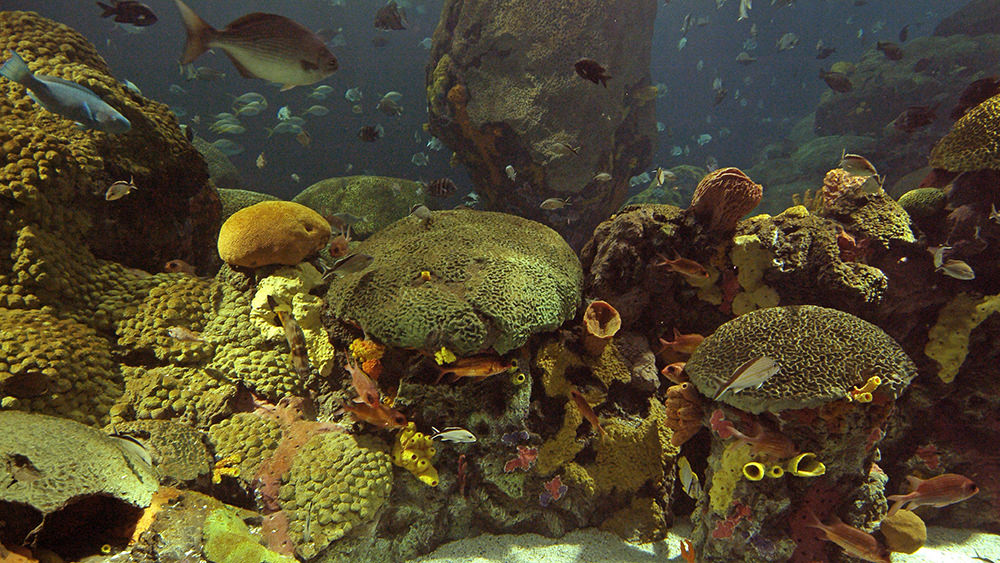
Tennessee Aquarium, located in Chattanooga, TN, opened a $30 million Ocean Journey building in April 2005. The centerpiece of this expansion is an immense replica of Flower Garden Banks National Marine Sanctuary.
This three-story tall, 618,000-gallon saltwater exhibit, the Secret Reef, gives visitors a realistic view of the huge, boulder coral formations that create the reef structure at East and West Flower Garden Banks, as well as the abundant wildlife that depend on them.
Texas State Aquarium
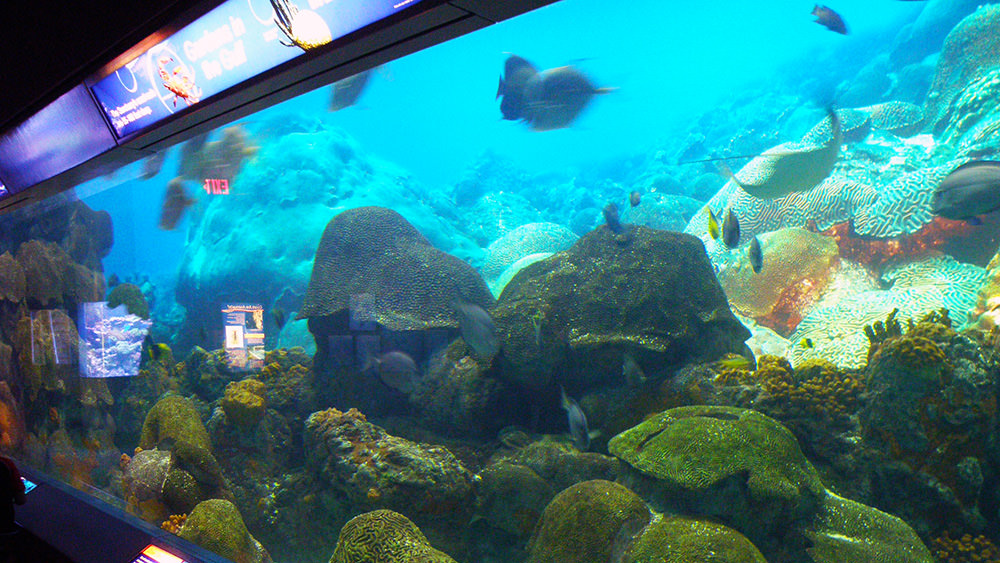
Texas State Aquarium, located in Corpus Christi, TX, has had a Flower Gardens exhibit since it opened in 1990, before Flower Garden Banks even became a sanctuary! This 40,000-gallon exhibit showcases the coral reefs of the sanctuary and a variety of fishes. Guests can also enjoy daily Diver in the Water presentations.
Sanctuary staff worked with the aquarium from 2009-2011 to update the exhibit area. Videos now provide short presentations about Flower Garden Banks National Marine Sanctuary, the National Marine Sanctuary System, coral reefs, coral spawning, sharks and rays, and deepwater habitats, in both English and Spanish.

Texas State Aquarium is one of two aquariums participating in the Aquarium-Sanctuary Partnership for America’s Keystone Wildlife with Flower Garden Banks National Marine Sanctuary. This partnership project is supported by the NOAA Office of National Marine Sanctuaries, the National Marine Sanctuary Foundation, and the Association of Zoos and Aquariums.

